Driving in Helsinki and Elsewhere in Finland
- By Niko Suominen
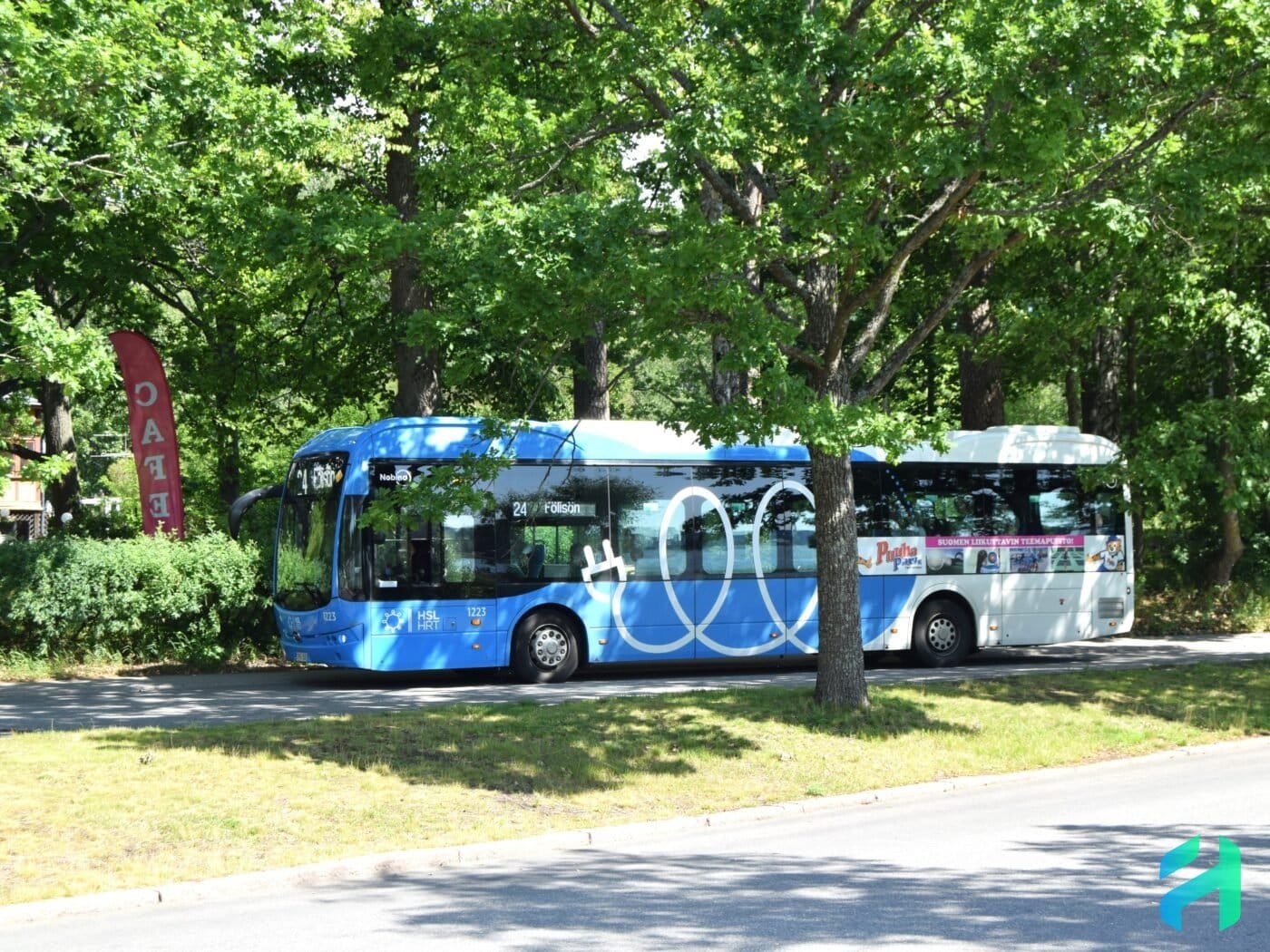
Is Driving in Helsinki Easy?
Driving in Helsinki is moderately easy but still more challenging than in smaller Finnish towns. Driving in the suburbs is simple, but it gets more difficult as you approach the city centre. In the city centre, there is heavy traffic, especially during rush hour, so you must be extra careful. For example, trams almost always have priority. Also, navigation may become challenging since turning left is often forbidden in the city centre. It is crucial to plan the route.
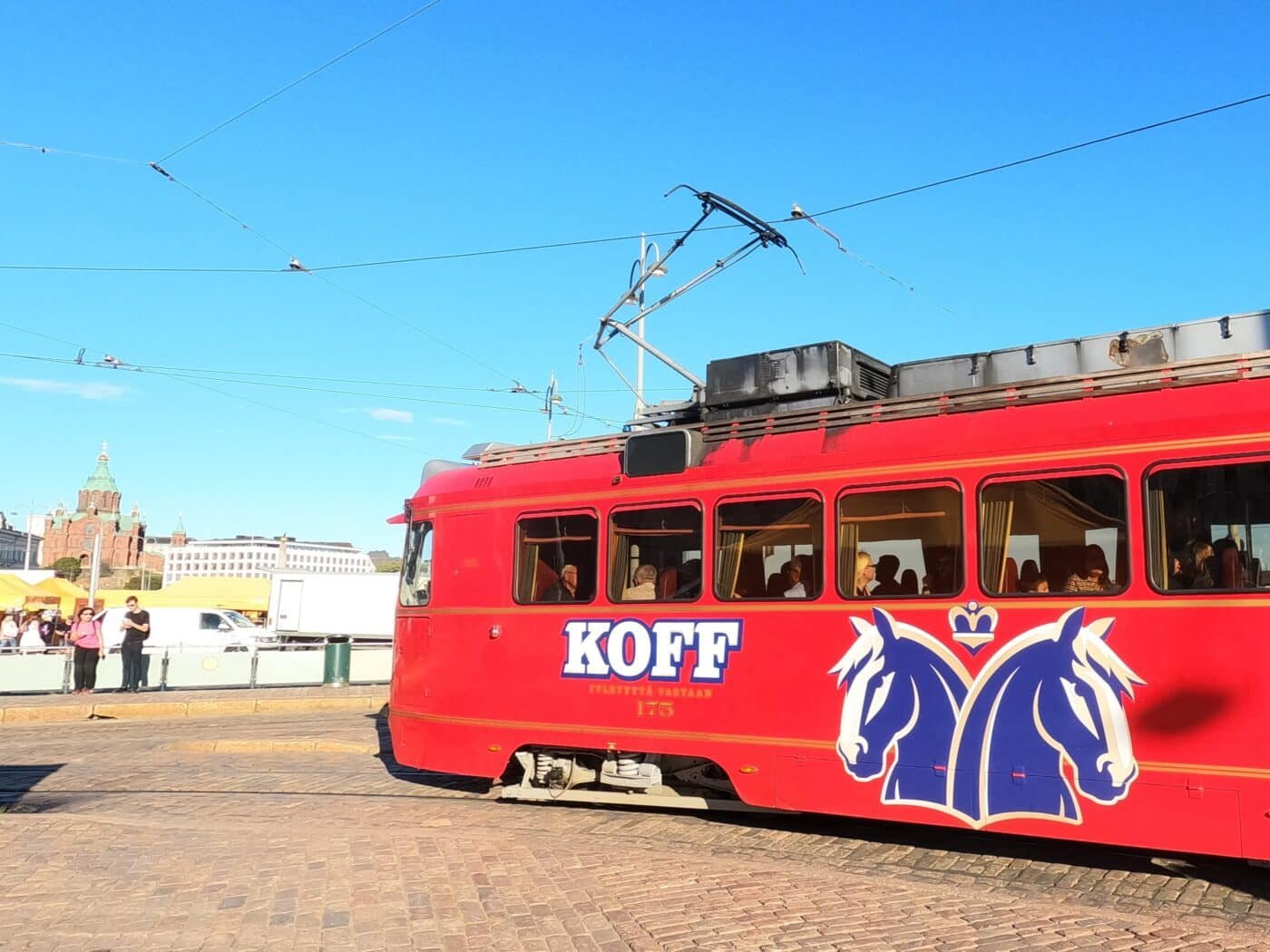
Advice for Driving in the Helsinki Centre
In the centre of Helsinki, it is essential to drive slowly. The speed limit is typically only 30 km/h. Pay attention to the traffic signs and priority rules. Be extremely careful with trams that are unable to stop fast. Especially when turning left over the tram tracks, look behind that the route is clear. With a slow speed and careful attitude, driving at Helsinki centre is not too difficult. It is good to know that the majority of Finnish drivers obey traffic rules well, and so should you.
Give way to pedestrians crossing streets since they expect you to stop.
Driving in Other Areas in Finland
Smaller Towns
Driving in other cities in Finland is easier. Tampere and Espoo have only one tram line, and other cities have no trams. With a low speed in city centres, driving isn’t too challenging.
Highways
Long-distance driving on highways is perhaps the most comfortable way of driving. Significantly, the 2-laned motorways are in good condition and driving on them is relaxing. You must be more careful on regular single-lane highways because the roads are narrower.
Consider maintaining a safe distance from the previous car. Regular overtaking is not recommended. Arriving safely is more important than speed. If you need to pass a slower car, reserve a lot of distance to perform safe overtaking. Some of the major roads have designated overtaking lanes. Use them when available to ensure safe passing manoeuvres. Allowing extra time for your journey in winter can help you avoid risky overtaking situations.
Outside the cities, animals pose an extra danger. Be prepared to encounter mooses, rabbits and reindeer on the road. Moos are especially dangerous if you drive faster than 80 km/h. It is a good idea not to exceed this speed when the visibility is poor, or there are warning signs for mooses. If you still prefer driving faster, ensure the road has protecting fences from animals and keep an eye on the edge of the forest around the road. The most dangerous places are marked with warning signs.
Parking in Helsinki
Street parking in central Helsinki is readily available, although be prepared for paid rates. Parking is often free in the evenings and on Sundays, but there are fewer free spaces. Learn to interpret parking signs because sometimes, it takes only a few minutes to get a parking fine, which costs 80 euros.
Helsinki has many underground parking halls, which make parking easy. However, they are pricey and do not offer free parking in the evenings or on public holidays.
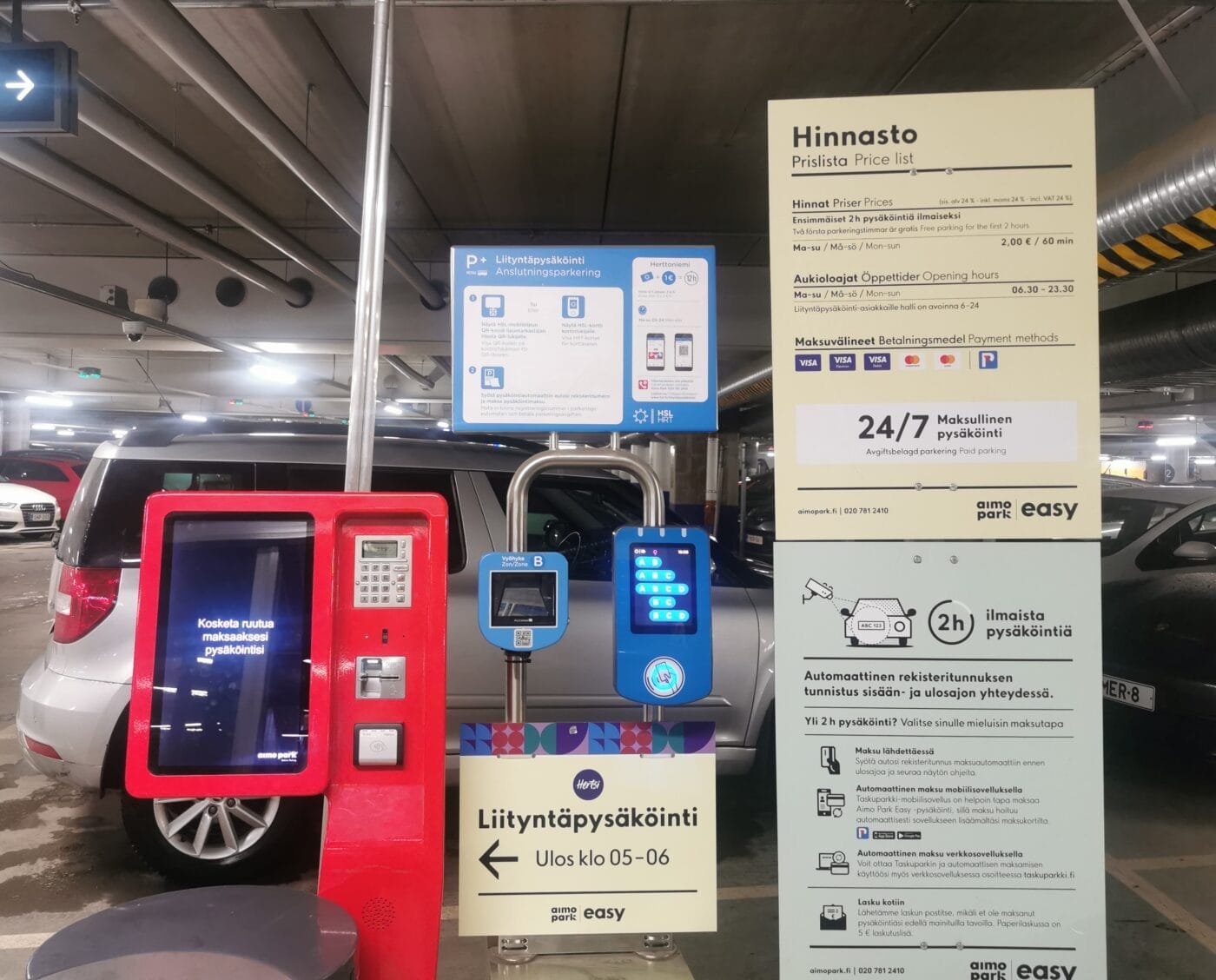
Street parking is often free in the suburbs. However, the free spots may have time limits. To help parking enforcement know when you arrived, clearly display your arrival time on your dashboard. There is no need for perfect accuracy—a half-hour window is sufficient. For instance, parking at 1:45 pm and marking 2:00 pm on a piece of paper on your dashboard would be perfectly acceptable.
We recommend installing the Parkman application.

Get some Helsinki Stopover Ideas.
Parking in Other Towns
Parking in smaller towns is more relaxed and quite often free. Street parking is standard, and you will easily find free spots. However, near city centres, you may need to pay for a machine or use a parking app.
Traffic Rules in Finland
Finnish traffic rules are similar to those in the rest of Europe. We introduce the most important ones.
Basics
You drive on the right side of the road and prioritise cars coming from the right. You overtake or pass another vehicle from the left.
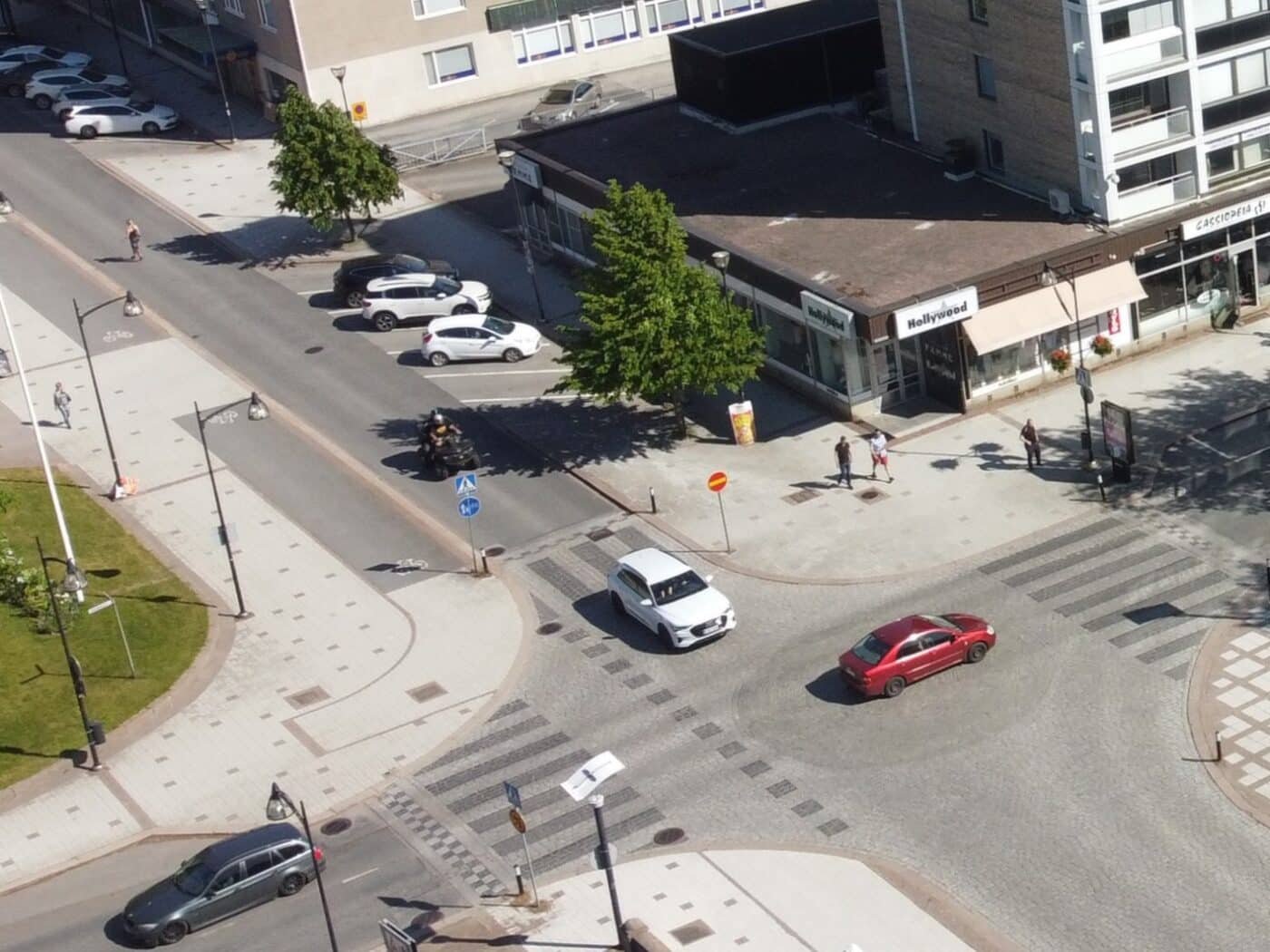
Driving License
Almost all licenses with an English translation are valid in Finland. For example, the EU, UK, and US licenses are accepted. However, we recommend checking a car rental company’s license requirements before hiring a car.
Alcohol Limit
The blood alcohol limit in Finland is 0.5 per mil. However, driving may still be illegal despite being below the limit. You must be fit to drive.
Speed Limits and Fines
The default speed limit in urban areas is 50 km/h. Outside the cities, it is 80 km/h. The maximum speed limit on motorways is 120 km/h, but a traffic sign always sets it. The limit is often 30 km/h or 40 km/h in residential areas. Pay attention to speed limit signs to know the active limit. Quite usually, in residential areas, the speed limit area sign affects the whole region, not just one road.
In the wintertime, the maximum speed limit is 100 km/h.
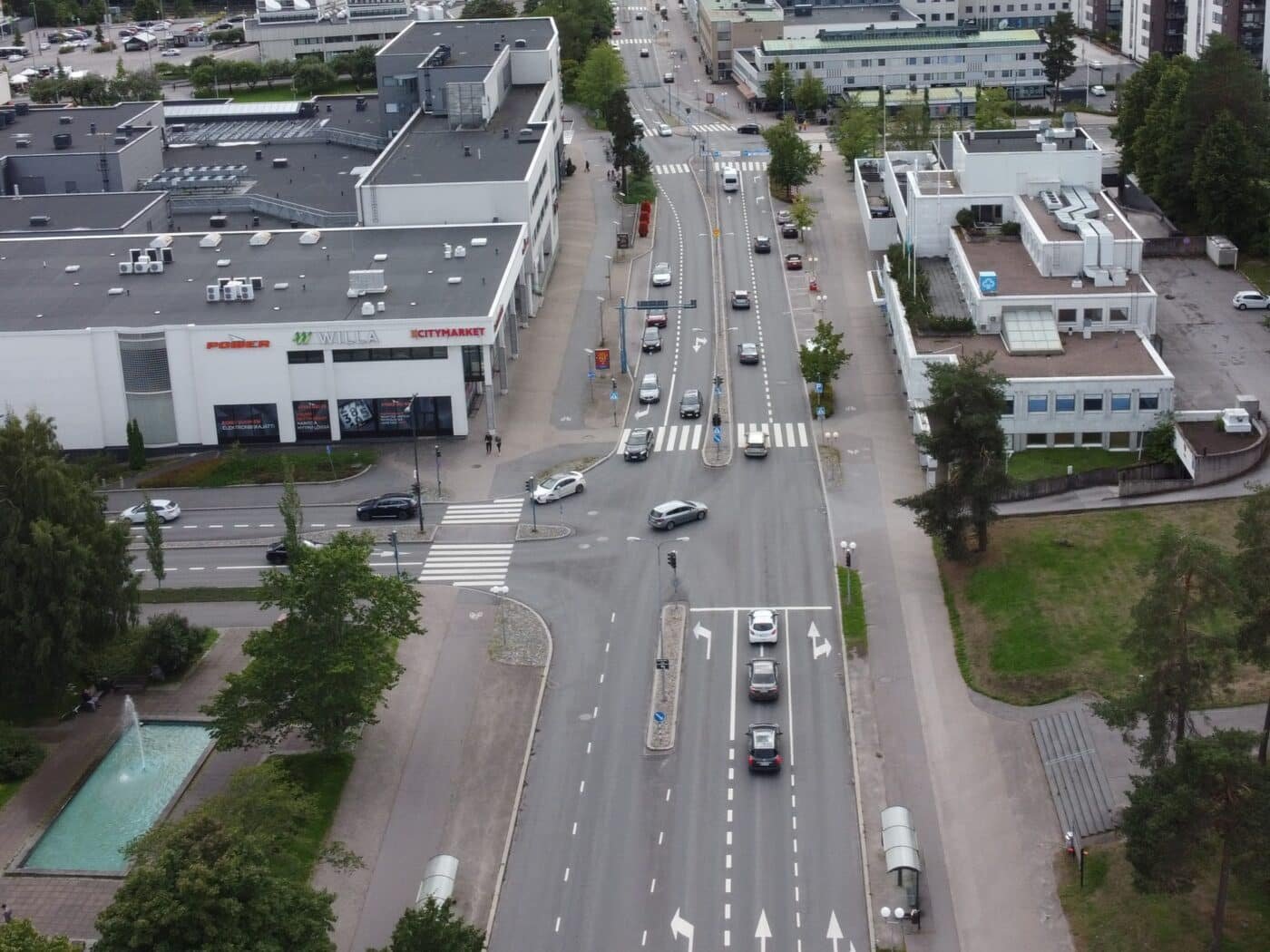
Speeding fines in Finland are high. If you overspeed up to 20 km/h, the maximum fine is 200 euros. If you overspeed more than 20 km/h, the fine will be determined based on your annual income and can be thousands of euros. There are also many speed surveillance cameras, so it’s better to follow the limits strictly to avoid trouble.
Finnish Road Network
Finland has a well-maintained extensive road network. The road network is 454,000 kilometres long, of which 78,000 kilometres are highways. The main roads are 13,000 kilometres; the rest, 64,900 km, are regional and connection roads. Approximately 65% of the highways are paved, and most traffic flows on these paved roads. If you are driving between cities, the streets are almost indeed paved.
Motorways are the best roads. They have a maximum speed limit of 120 km/h and at least two lanes in both directions. A green sign with a road symbol marks a motorway.

Expressways are rare, but they exist in some parts of Finland. They are almost like motorways, with less traffic and fewer lanes. The maximum speed limit is only 100 km/h. Expressways are marked with a green sign and a car symbol.
Other highways are marked with blue signs. Usually, they have only one lane per direction. The speed limit varies between 60 and 100 km/h. The roads may have an extra lane now and then, which is meant for overtaking slower cars. Regular highways are the most challenging roads to drive because they are narrower, there are more curves, and animals appear on the streets more often.
Unpaved roads may be found in the countryside. Surprisingly, these roads may have many curves. Still, the speed limit is 80 km/h, so drivers must be extra cautious with a safe speed suitable for the situation.
Winter Driving
Winter driving in Helsinki is much easier than long-distance winter driving or driving in northern towns. Even if you plan to drive only in Helsinki, you must pay attention to the weather conditions and have winter driving skills.
Winter driving is not something you can learn just by reading. It would help if you tried it yourself. However, we can give you tips on how to make your first winter driving safer.
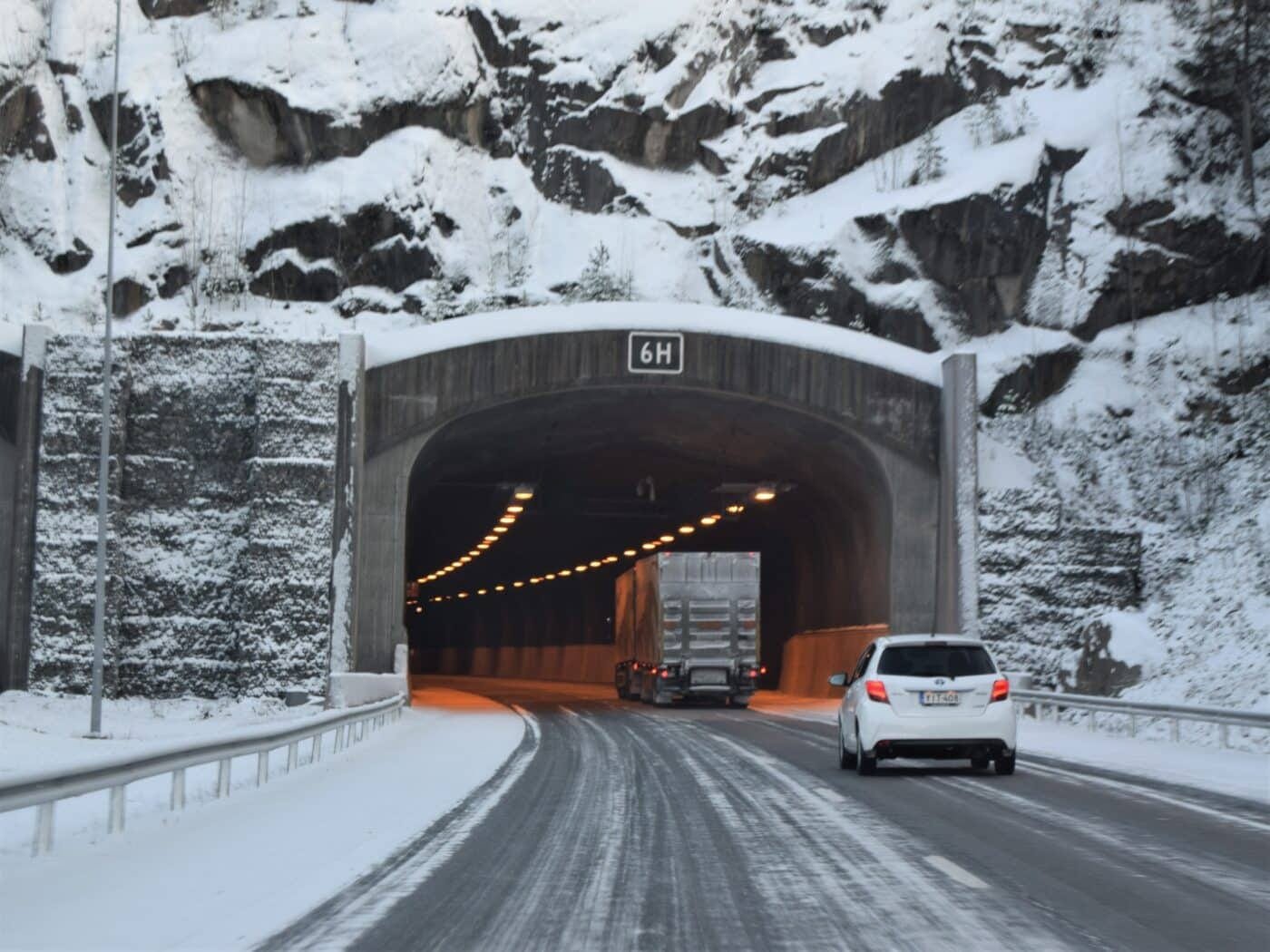
Braking distance on a slippery road is significantly longer. That is why you need to keep a long distance from the car in front of you. A distance from the previous car is essential, especially in the cities. In addition, you need to slow down before curves if you suspect the fraction to be low.
It is essential to handle the gas, brakes, and steering wheel softly. Violent movements may cause sliding, which is difficult to control without experience. It is also vital to be proactive in managing speed. We recommend hiring a front-wheel car. Rear-wheel cars, like Teslas, are much more challenging to handle.
Modern cars have EPS and ABS technology to keep the car more stable on a slippery road.
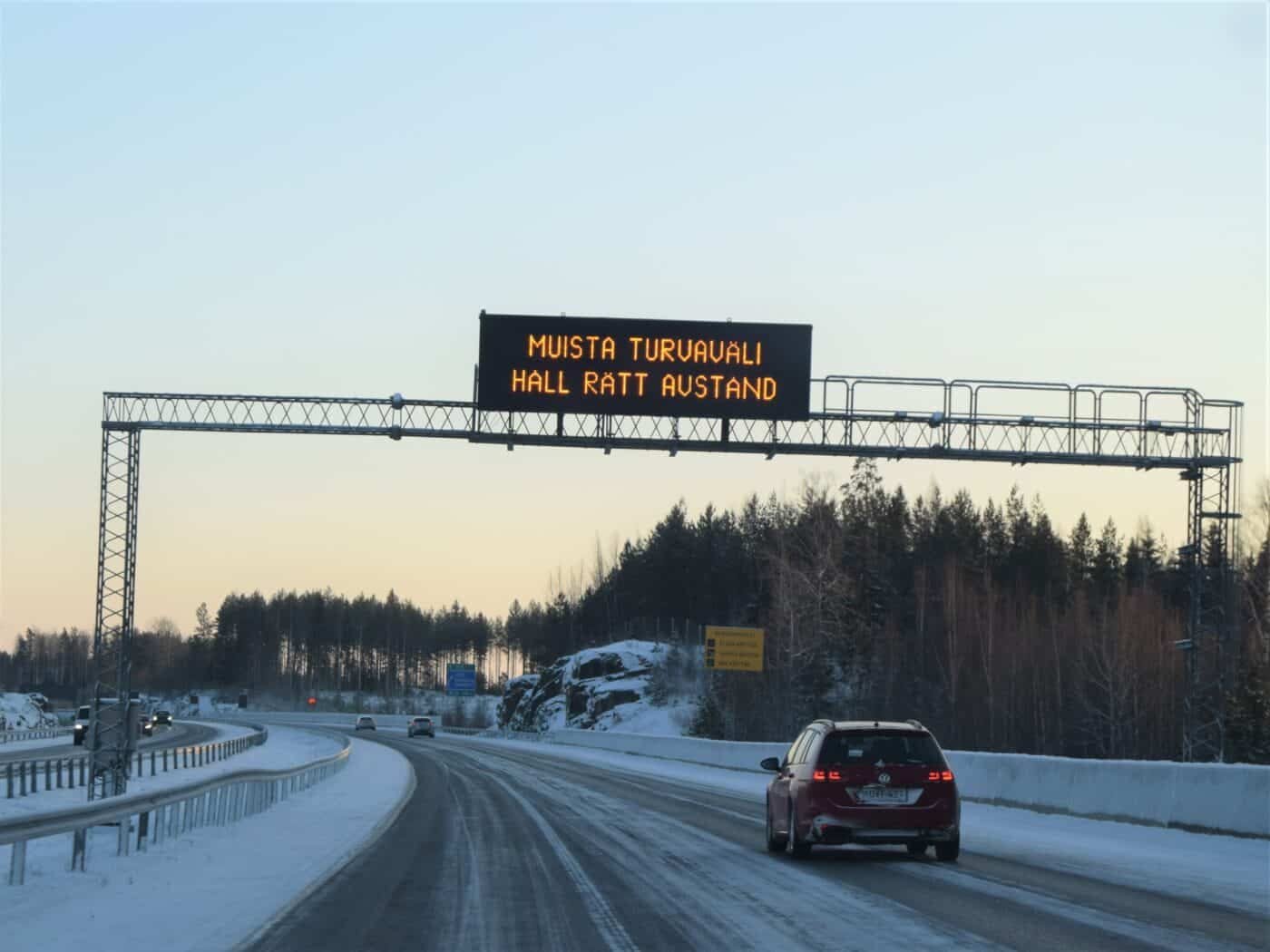
In winter, you need to adapt to the conditions. Keeping the maximum allowed speed is not always safe, but you must drive slower in challenging situations. Ice or soft snow on the road is dangerous. It is also essential to know how good your tyres are. Different tyre brands have different qualities. Early in the fall, there may be black ice on the ice roads in the mornings, which may surprise you.
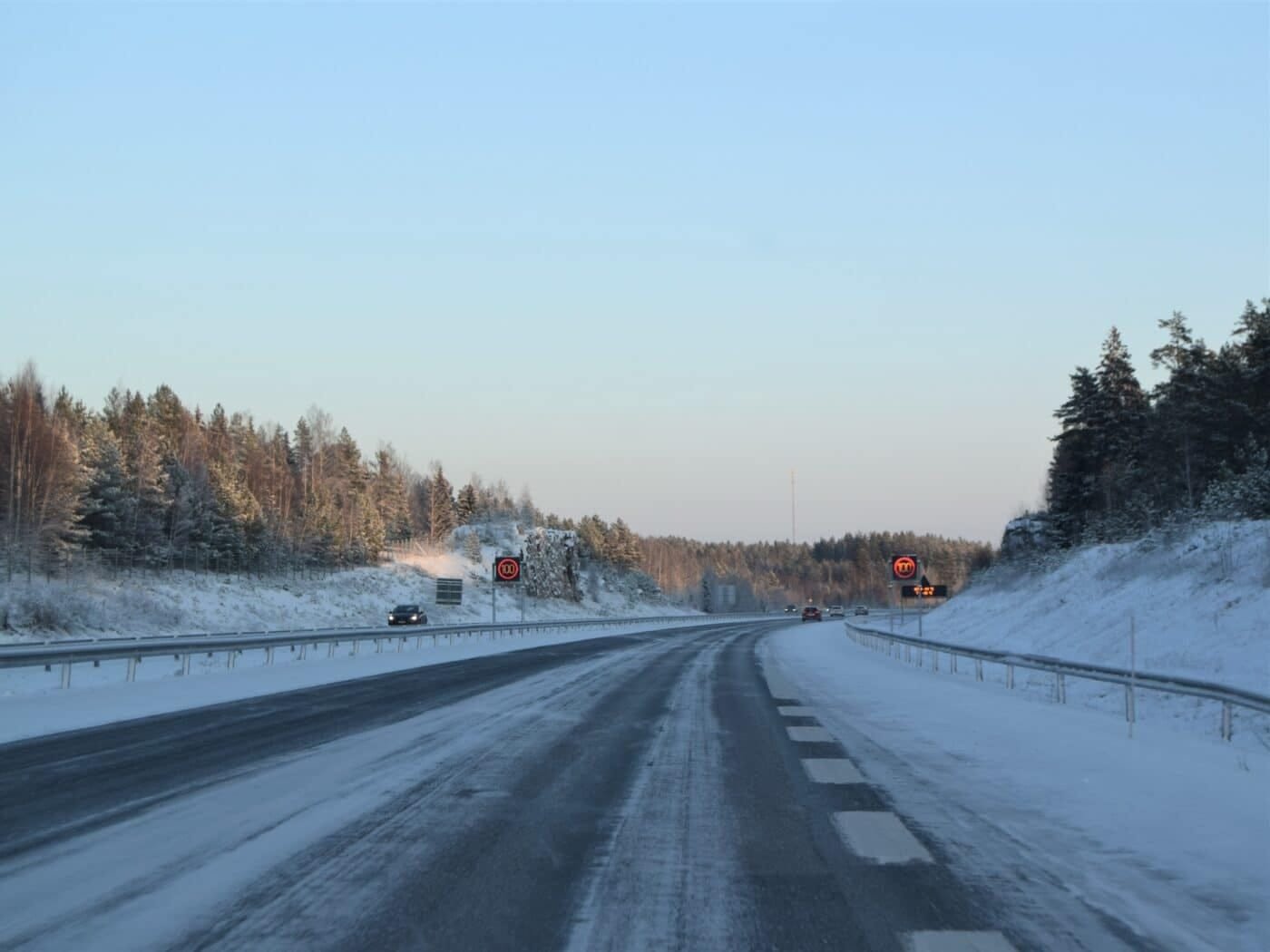
Winter Tyres
Between November 1 and the last day of March, winter tyres must be used in winter conditions. Driving without them would also be unwise because roads become slippery. You will also get a fine if you still have summer tyres on. In case of an accident, your insurance may not compensate you if you have taken a risk and driven with unsuitable/wrong tyres.
Studded tyres are common in Finland and are best for winter driving, even though they are a little noisier. It is good to know that in the Helsinki centre, there are a few roads where studded tyres are forbidden. But it would be best if you still had regular winter tyres in the winter.
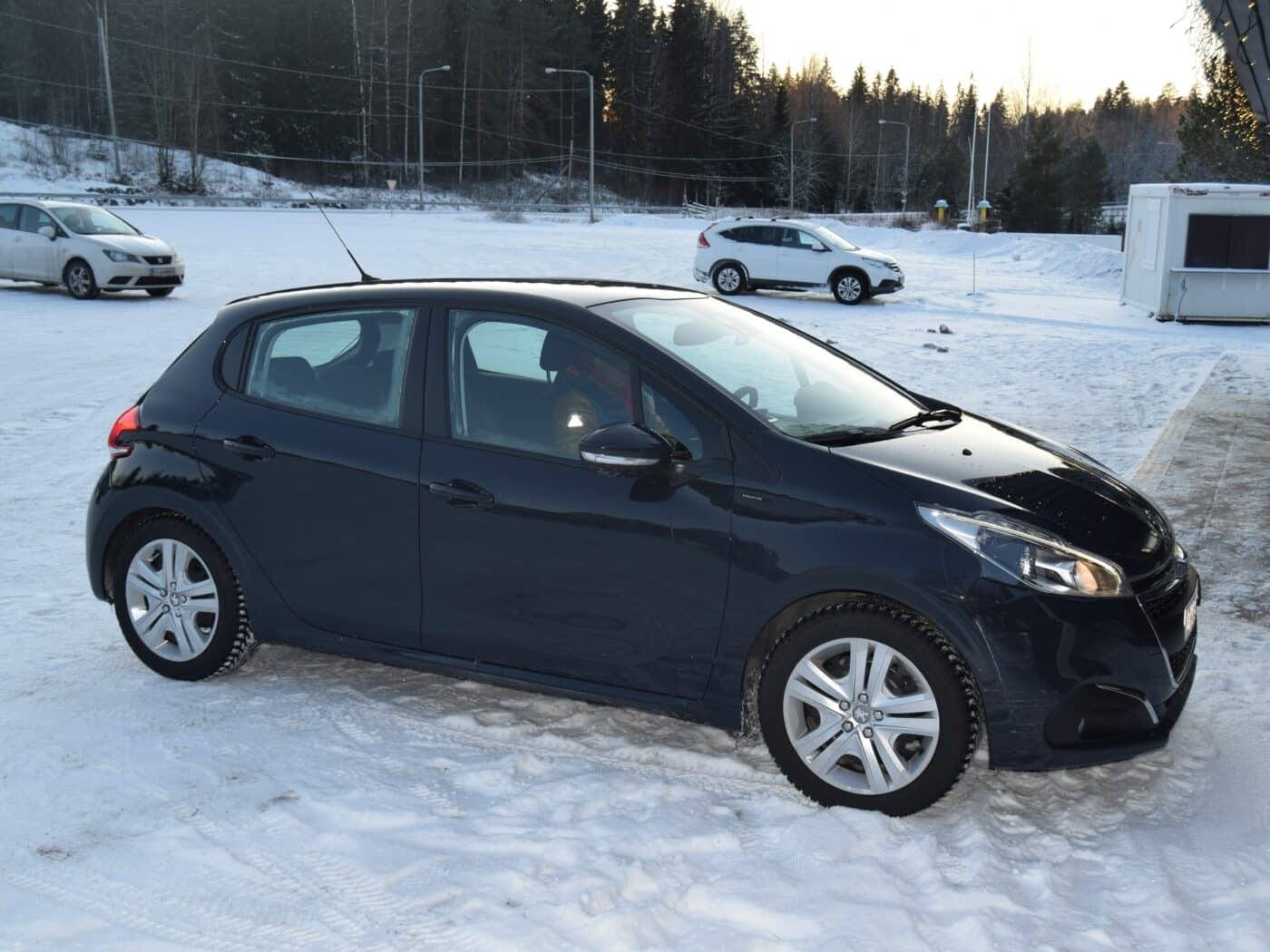
The minimum permitted tread depth of winter tyres in Finland is 3 mm. However, it is recommended not to drive on winter tyres with a groove depth of less than 4 mm. The groove depth of new winter tyres is about 10 mm, and that of summer tyres is 8 mm. If you plan to rent a car in the winter, we recommend asking for studded tyres for safer winter driving. Also, ask car rental companies for advice on winter driving.
Where to Rent a Car in Helsinki?
If you arrive by air, we recommend hiring a car straight from the airport. The city also has car rental offices, some of which can bring a vehicle to your hotel.
It is good to compare car rental companies and their prices on Discover Cars. Complete protection with zero excess will bring peace of mind. The full protection does not cost much, and you don’t need to worry about minor scratches or incidents caused by winter conditions or your own mistakes. However, getting a car scratched by 3rd parties is uncommon in Finland.
Questions and Answers
The default speed limit in non-urban areas is 80 km/h and 50 km/h in urban areas.
It may be a little tricky, but with a good attitude, you will survive. Keep an eye on pedestrians and trams.
Yes, they are. You don't want to get a fine.
The roads in cities and between the towns are paved. Some more minor roads elsewhere may be unpaved.
Sure. No special permission is needed, but if you are an inexperienced winter driver, ensure the car has winter tyres, preferably studded ones.
Driving isn't more difficult, but losing control of your car can be a big problem. You must keep your speed low and remember to stop the vehicle on a slippery road.
A car is unnecessary if you only plan to stay in Helsinki or another big city. However, a rental car allows you to see places outside the capital area.
Bottom Line
We recommend renting a car if you plan to stay in Finland for over three days and want to see areas outside the city centres. A rental car does not offer much additional value in the Helsinki Centre. However, it is practical for visiting nearby cities like Espoo and Vantaa, for example, making a day trip to the Nuuksio National Park or Flamingo Spa.
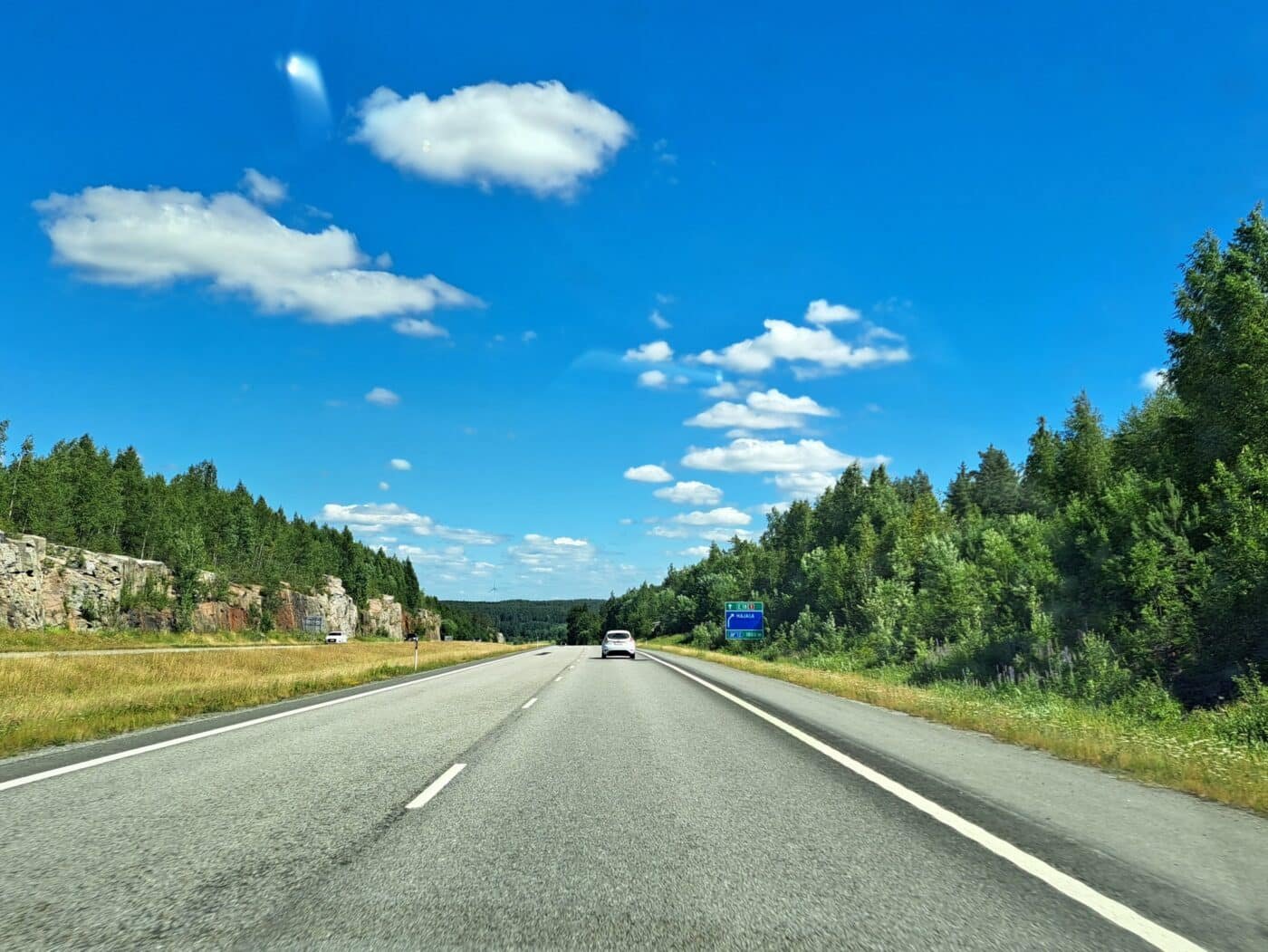
Finnish drivers are known for following traffic rules and keeping the roads safe for everyone. They are also exceptionally courteous. Speed limits are strictly enforced, and fines can be high, so adhering to them ensures a smooth journey. By driving cautiously and following the rules, you can expect a relaxed driving experience in Helsinki or elsewhere in Finland.
